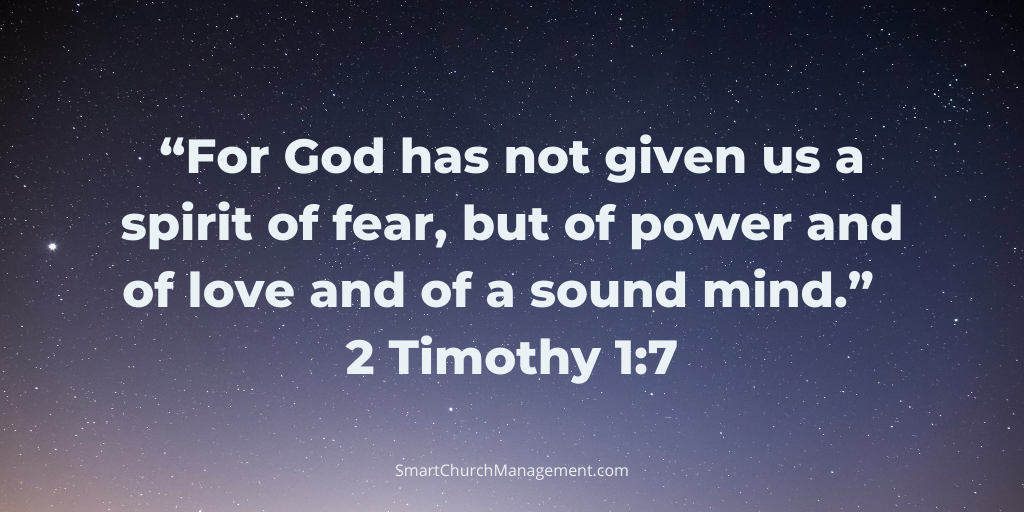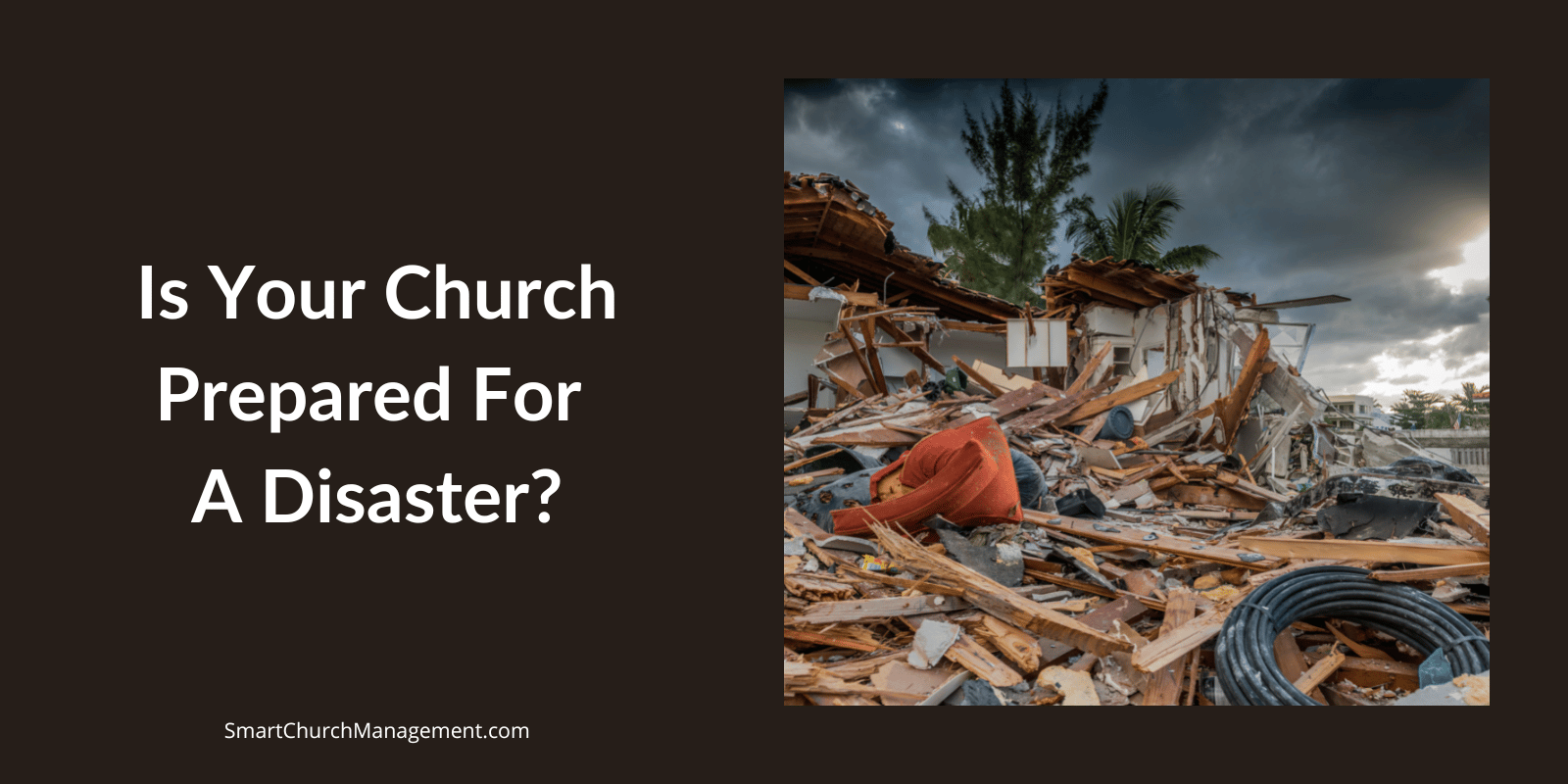Estimated reading time: 8 minutes
Natural disasters have become all too common in recent years. I live in southwest Florida and have witnessed the destruction of a major hurricane.
The nation marked the 20th anniversary of Hurricane Katrina as one of the deadliest and most destructive storms in US history.
It was overwhelming to watch the news and see the unbelievable images of the flooding and devastation for the people of the Gulf Coast that year.
I joined thousands of volunteers who helped with the cleanup after the hurricane and can attest that even two years later, the cleanup efforts continued.
Disasters Have Become Common Place
It is difficult to turn on the news without seeing a report of some natural disaster or unexpected emergency.
Wildfires, tornadoes, flooding, and hurricanes are just a few of the unpredictable disasters that can impact a community – and churches are not exempt from these unwelcomed tragedies.
As believers, we trust God and stand on His Word, so we are not in fear but use Biblical Wisdom and prepare.

Preparing for a disaster is one of those things that is difficult to prioritize over all the competing church priorities.
However, being prepared for the unexpected can save a church precious time when moments count. And can lay the groundwork for a quick response to an emergency or disaster.
A disaster could be a natural disaster (hurricane, tornado, flood, or earthquake), an act of terrorism (think Boston Marathon Bombing), or an armed intruder (think Charleston Church Shooting).
Each of these examples has its own unique set of challenges, but they all share the same need – plan and prepare for the unexpected.
Preparation Is Crucial
The ever-changing world now requires everyone to be prepared for an emergency.
However, most disasters or emergencies don’t allow enough time to develop a response plan.
This is why your church must have a plan in place that can be activated during a time of crisis.
Natural disasters and attacks on places of worship in recent years make this planning essential.
This type of planning can also help the church be ready to respond and be back up and running quickly, so it can continue to care for its congregation and support those affected by the disaster.
What is an emergency preparedness plan?
A church emergency preparedness plan is a written document that answers the questions of who, what, where, when, and how to get your ministry back up and running as quickly as possible following an emergency or disaster.
Thinking through all the details that answer the “what if” question in any given scenario helps to create the content for an emergency preparedness manual.
For example, what if a Category 4 hurricane hit the church building, what if an armed intruder interrupted a church service, or what if the church were flooded?
How To Develop A Plan
Planning for an emergency or disaster requires a representative team of your senior leadership, facilities management, church administration, information technology, and telephone systems.

This team is responsible for thinking through all given scenarios and determining the best course of action in each situation.
For instance, this plan might provide instructions for securing a building in the event of an impending hurricane.
The team then organizes the information into a binder or electronic record as a resource for use in an emergency or disaster.
An emergency preparedness manual can be as detailed as is comfortable or as simple as mapping out some logistical first steps.
The more detailed the plan becomes, the less thinking will be required during an emergency, when there is typically a lot of chaos and many logistical challenges that need to be addressed.
For example, identifying where a command center would be located ahead of time saves valuable hours or even days trying to find a gathering place.
Church leaders need to imagine their ministry running without a functioning facility, computer system, communication system, or even employee support for days, weeks, or even months.
Without a plan, a sudden disaster could literally wipe out a church and its congregation.
There were many church casualties in the Hurricane Katrina disaster.
So, what are some things your
church should be thinking about?
Disasters and emergencies typically have three phases: first response, clean-up, and recovery.
Mapping out a plan to address each phase is what church emergency preparedness is all about.
Not all emergencies are the same, so not all phases may be necessary.
1. First Response
Ensuring the safety and security of the church facilities and providing help to possible victims is the first response phase.
This can include anything from providing first aid, basic living essentials, or food and water.
This phase also requires responding to any media questions and having a prepared spokesperson to represent the organization.
Maintain an email or text list of members to send notifications to them, keeping them informed at every step.
Use your Social Media platforms to stay in touch with members.
2. Clean-up Phase
Cleaning up after a disaster can be overwhelming.
The clean-up phase may include clearing debris, cleaning the facility, and preparing the building for employees, volunteers, or members to return.
Depending on the type of disaster or emergency, having a clean-up plan is essential to a normal return of church operations.
If there is no significant damage to the facility, a cleaning may be all that is needed to return to normal operations.
3. Recovery Phase
If the damage is extensive, the third and final recovery phase involves rebuilding or repairing the facility to restore it to its original state and make it ready for the public.
Depending on the extent of the damage, the rebuilding phase may take anywhere from days to weeks or months.
If the building is completely destroyed, your church will need a temporary campus to continue with church services until a new facility is secured.
In the event of a long-term recovery, it is essential to designate a location as a command center where a team can effectively facilitate the recovery process.
What should an Emergency Preparedness manual include?
Action Steps – The manual will include well-thought-out steps of action for each of the three phases of recovery.
This is where you identify the who, what, where, when, and how.
For example, think through and answer the questions – who will speak on behalf of the organization, and where will the congregation gather if the church facility is too damaged to hold a church service?
Emergency Contact Information – Identify who needs to be contacted, in what order, and by whom.
Include phone numbers of key church employees, volunteers, or congregants.
Information Systems – What are the requirements for computer hardware, software, and business data backup files?
Is the network complicated enough for a network diagram?
What is the telephone system layout?
Building Layout – Are there blueprints or building diagrams that would be helpful?
Where might needed supplies be stored for quick access?
Emergency Preparedness Box – An emergency preparedness box should be kept in a separate location and should contain items to help the church get back up and running if the church building is inaccessible.
Some possible contents of the box may be:
- Emergency Plan Manual
- Employee contact information
- Backup files of key accounting and church data
- Copies of insurance documents and policies
- A hard drive with copies of computer software
- Key church volunteer and congregation contact information
- Box with necessary office supplies, i.e., pens, paper, stapler, tape, etc.
This is simply an example of what could be placed in an emergency plan box.
Every organization is different, and the contents should be customized for your church.
Once the box is created, it is recommended to update it every six months or so to ensure the contents remain current.
Don’t Forget To Test The Plan
Once an emergency plan is in place, it should be tested by going through a fictitious what-if scenario.
It is becoming increasingly common for organizations to conduct disaster drills to test their plans and identify areas that need improvement.
I have worked with teams who have tested their plan by going through a drill, and I cannot emphasize how much is learned and what a valuable experience it is.
It is definitely worth the time investment.
There Is Help Available
There are some great resources that can also help with your emergency planning – FEMA and Ready.gov can help you prepare your church for unexpected emergencies.
Lastly, emergencies and disasters are unpredictable at best, but investing the time and doing a little planning ahead of time can minimize the chaos of an emergency and turn it into a smooth-running response process.
Watch this incredible video from a church security camera as a tornado blew through its playground.

Is your church prepared for the unexpected?
Have you joined our community to access our library of church documents and job descriptions?



